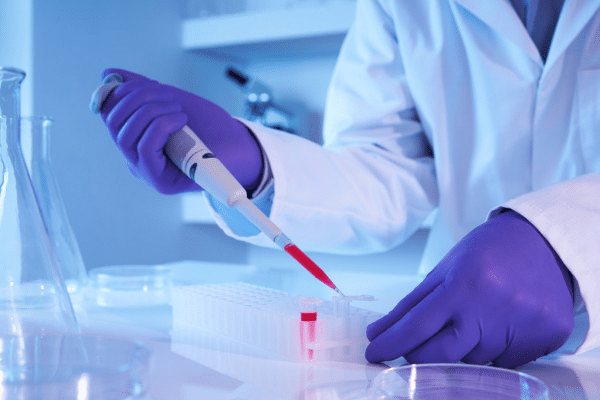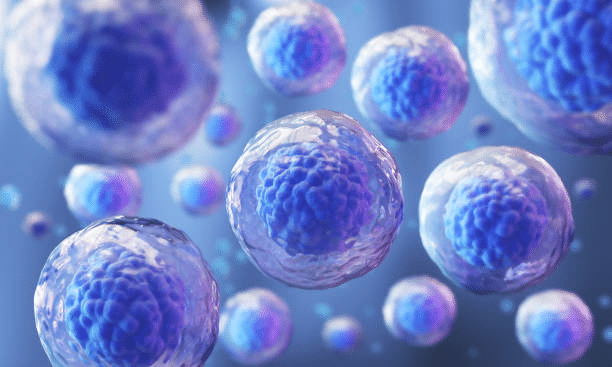Cord blood and stem cell storage can potentially prevent future health and life-threatening illnesses in your family. Storing your baby’s cord blood and stem cells requires specific knowledge, equipment, and storing methods. Read on to learn more about cord blood and stem cells with Stirling Ultracold today.
What are Stem Cells
Stem cells and their related products provide excellent insight and enable discovery of new medical treatments. Stem cells are essentially raw materials from the body in which functions are generated. According to the Mayo Clinic, stem cells “become specialized cells with a more specific function, such as blood cells, brain cells, heart muscle cells or bone cells.”
There is great interest in stem cells for research and study.
Stem cells from cord tissue and cord blood increase the understanding of disease and future health.
By watching stem cells mature into bones, heart muscles, nerves, cord tissue, and organs, researchers and scientists can understand how diseases are created.
Stem cells from cord tissue and cord blood create regenerative medicine.
Stem cells are guided into becoming specific cells and are used to regenerate damaged tissue. Many individuals can potentially benefit from regenerative medicine advancements and research, including patients with type 1 diabetes, Parkinson’s Disease, Alzheimer’s Disease, heart disease, stroke, and cancer.
Stem cells may be grown into new tissue for transplant and regenerative medicine. Researchers advance stem cell knowledge for applications in recent transplants and regenerative medicine.
Stem cells from cord tissue and cord blood aid in the safety of new drug testing.
Researchers can use stem cells to test drugs for safety and quality before using investigational drugs in people. Stem cell testing will likely directly impact drug development for cardiac toxicity testing.
New areas of study include the effectiveness of using human stem cells programmed into specific cord tissue cells for testing new drugs. When testing new medicines for accuracy, the cells must be programmed to find properties of a type of cells targeted by a drug. Techniques for cell programming cells continue to be studied.

As an example, nerve cells can test new drugs for nerve disease. Testing can show if new medications positively affect the cells and if they were harmed.
How Stem Cells are Collected
Cord Blood Stem Cell Samples
Umbilical cord blood is a biological product found in the placenta’s blood vessels and umbilical cord stem. Cord blood is collected after a baby is born and after the umbilical cord is cut. According to the US Food & Drug Administration, “Umbilical cord blood is approved only for use in ‘hematopoietic stem cell transplantation procedures,” which are completed in patients who have disorders in their hematopoietic system.
Umbilical cord blood consists of blood-forming stem cells used to treat patients with blood cancer such as lymphomas and leukemias. Other blood and immune system disorders include Wiskott-Aldrich syndrome and Sickle Cell disease. The benefit of using umbilical cord blood is that it is a source of stem cells that form blood cells and can be used to transplant those who need regeneration of blood-forming cells.
Stem cells from umbilical cord blood are collected after birth is completed. When the placenta is still in the womb, a doctor clamps the umbilical cord and collects the blood. The cord blood is then transferred to a specialized bar-coded processing kit.
Cord Tissue Stem Cell Samples
Most stem cells are found in cord tissues, including fat and bone marrow. Cord tissue stem cells are more limited in yielding results to various cells in a body. Researchers used to think that adult stem cells create similar cells. Researchers say that the mesenchymal stem cells in bone marrow could give rise to only blood cells.
However, new evidence shows that stem cell tissue creates multiple cell types. Bone marrow stem cells produce bone muscles, for instance. To collect bone marrow stem cells, needles are inserted into the soft center of the bone.
Because of these cases for stem cell use, research has led to clinical trials that test the usefulness and safety of stem cells in people. Adult stem cells test people with heart disease and neurological complications.
Public and Private Cord Blood Stem Cell Banking
Many families wonder if they can store cord blood for stem cell research that is beneficial to their future. Keeping cord blood at a blood bank is often a typical process, however, many wonder whether it is best to opt for a private or public cord blood bank. Private and public cord blood banks each have their pros and cons. Here are some factors to consider when deciding on a cord blood storage method for your family and possible clinical trials or research.
Private Umbilical Cord Blood Banking
Private banks work much differently than public cord blood banks. In private cord blood banks, parents pay to have their baby’s cord blood banked for their future use or a family member in need. The cost of private cord blood banking depends on the cord blood bank. A private bank is an excellent choice for many family members with genetic diseases. Storing your baby’s cord blood at a private bank could be used to treat future conditions using your baby’s stem cell tissue and stem cells from umbilical cord blood.
Public Umbilical Cord Blood Banking
In public cord blood banking, your baby’s cord blood is donated to a cord blood bank and can store cord blood for anyone who needs it during a transplant. Your baby’s cord blood and their stem cells stored in a public cord blood bank may also be used for medical research.
Donating your baby’s cord blood stem cells is free, and public cord blood banks pay for the collection and storage process. When parents donate their baby’s cord blood stem cells, they sign away any rights to it. In this case, the cord blood bank owns the baby’s cord blood and associated stem cells.
Public cord blood banks have to meet specific eligibility requirements. If you’re healthy and have only one baby, a donation is likely. However, not everyone is eligible, and donations can be rejected.
About Cord Blood Stem Cells and Cord Blood Stem Cell Storage

How does stem cell storage work?
Cryoreservation of Hematopoietic stem cells is widely used to transplant stem cells and stem cell therapy to treat human disease. The current cooling approach in stem cell cryopreservation can be problematic:
- There is a requirement for expensive liquid nitrogen freezers
- Large consumption of liquid nitrogen is often used
- Liquid nitrogen failures and human error can degrade the viability of stem cells in the cryostorage process
Fortunately, Stirling Ultracold is an industry leader in sustainable lab freezer technology and ultra-low temperature (ULT) storage. Our ULT solutions leverage advantages across many different industries for uses, including clinical trials, biological research, and laboratory use.
Learn how a regenerative biologics provider grew sales by 30% with a fleet of portable ULT freezer. Download this case study.